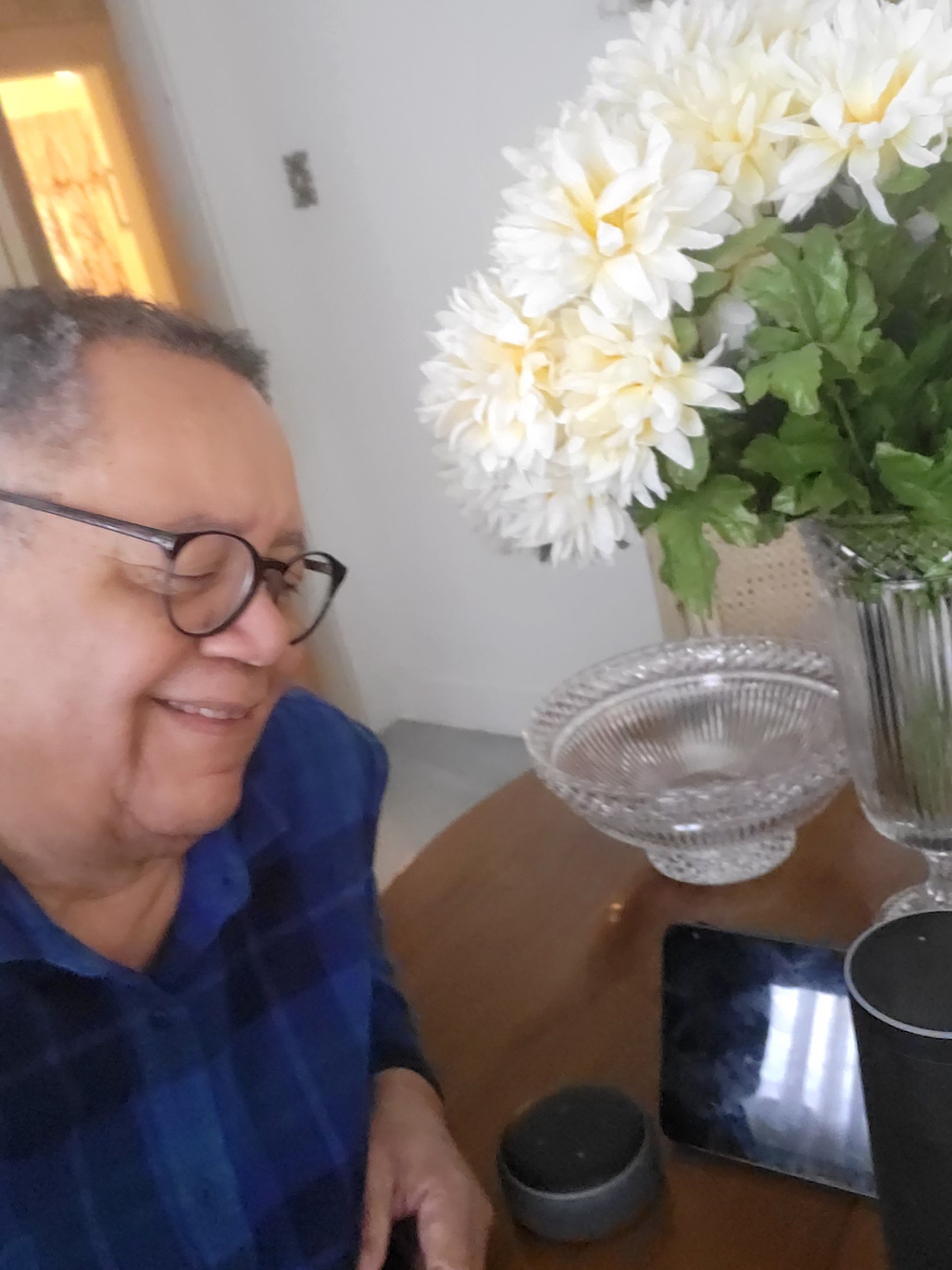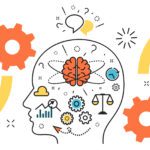By: Bruce Cannedy | Posted: February 8, 2023 | Updated: April 7, 2023
When you buy something we recommend, we may get an affiliate commission — but it never affects your price or what we pick. Learn more
Over the past few years, I have been the major caregiver for my mother, who lives 350 miles away.
This article is partly about my experiences using Alexa to help her, and partly to share some things I have learned about what is important in teaching technology to older adults in ways that mean they will actually take advantage of the benefits of that technology.
My Experience Leveraging Tech to Care for my Mother
Over the past few years, I have been the major caregiver for my mother, who lives 350 miles away. Caring for my mother has granted me a first-hand understanding of how technology has improved her safety and well-being, as well as how she has adapted to using these new devices in day-to-day activities. I have also witnessed the problems seniors can have with technology.
We Started with Alexa in an Echo Dot: Companionship
We started by purchasing my mother an Amazon Echo Dot. My goal with this gift was to provide her with companionship since she lives alone and often spends extended periods by herself. Alexa would improve her spirits by giving her something to interact with, day or night.
More and More Use Cases
Once I installed Alexa, my mother quickly learned to ask for the weather, music and time.
As she became more comfortable with Alexa, she started asking me questions about the device and became excited about Alexa’s responses.
During emergencies, Mom learned to contact me with her voice using Alexa. I also used Alexa to contact her when she did not answer the phone.
Then Came COVID and Echo Show
The second part of our journey began when COVID-19 was at its peak.
The family wanted to see my mother on her birthday, even though we couldn’t gather in person. So, I bought her an Alexa Echo Show, which allowed her to see and talk to the family. The Alexa Echo Show kept her from being isolated during this tough time.

Caption: Author Bruce with some of his Alexa devices.
Then Smart Home Devices
I then started to investigate how smart home devices could improve her safety.
We bought smart lightbulbs and set them up throughout the house.
I purchased two Ring doorbells, so she could see who was at the door and interact with them without having to get up and open it. The Ring doorbell also allowed me to interact with people at my mother’s front door from hundreds of miles away. On one occasion, I was able to scare away a stranger at the rear of the house. Installing the Ring doorbells was a good decision.
There Was an Initial Learning Curve. I Needed a Book. Could not Find a Good One.
Though my mother adapted well to Alexa, the initial introduction was awkward.
To help her better adjust to the technology, I looked into purchasing books about skills, commands and setup. The books needed to explain how Alexa could meet her needs.
I began my research and could not find a book about how Alexa can support everyday needs and situations. None of the material I read addressed how Alexa and its companion devices could improve the lives of older individuals in the ways I had witnessed with my mother.
So, I Wrote a Book on Alexa for Older Adults 🙂
Upon seeing this gap in the available literature, I became motivated to write Ask Alexa.
The book aims to give older adults a tool to “Age in Place.” Age in Place has various definitions; the one I like the best is “to enable older people to maintain independence, autonomy and connection to social support, friends, and family.”
Ask Alexa is available for preview and purchase on Amazon.
- View Bruce’s book “Ask Alexa” on Amazon’s website [affiliate link]
What’s in the Book
In the book, you will find skills and commands categorized by the following daily activities and physical conditions:
- Food and Nutrition
- Medication
- Loneliness
- Memory
- Entertainment
- Safety and Security
- Accessibility
- Transportation
- Pets
- Wellness, Physical Fitness, Exercise
- Faith, Meditation; Sleep Sounds
- Weather, News; Traffic
Voice-activated devices like Alexa are the gateway to helping these adults in areas where they are uniquely vulnerable.
Because of the rapid changes in voice technology and the devices they control, I also created a website to offer even more advice on the options available for seniors: www.seniorpeer.com.
Conclusions About Teaching Tech to Older Adults
Caring for my mother has granted me a first-hand understanding of how technology has improved her safety and well-being, as well as how she has adapted to using these new devices in day-to-day activities. I have also witnessed the problems seniors can have with technology.
Lots of Older Adults Need Tech
By 2038, there will be 17.5 million households in their 80s. Technology is essential for older adults to stay in their homes longer. Programs that teach technology to seniors should change their current teaching methods to focus on these seniors’ needs.
“Flashy Objects” is the Wrong Approach
Modern senior programs are heavily focused on technology.
Seniors are asked, “Do you want to learn about this flashy new device? Let us teach you about it because other seniors have found that this device makes a difference in their lives.”
This approach does not work for older seniors.
These individuals have seen an endless amount of technology firsts, such as the color television, the transistor radio, and man walking on the moon. The number of new technologies and resulting devices has grown exponentially during these seniors’ lives. Today’s technologies are the result of tech they developed, commercialized and used.
All this is to say that flashy new objects do not excite them.
Focusing on the “Benefit”: Better Quality Life
Instead, we must focus on teaching seniors how modern technology can make their lives easier.
In essence, we must create need-based teaching. Older seniors need to feel comfortable and confident while learning. Curriculums should focus on the specific ways that technology can help seniors in their day-to-day lives, rather than teaching them about how it works and all its fancy features.
Follow up Essential
It is essential that tech education continues after the initial classes.
Most programs do not follow up with their seniors, which is a significant missed opportunity.
Follow-up allows you to see if the older students are still using and understanding their devices properly. If seniors do not fully understand how the device helps them, they might not turn it on at all and miss out on its benefits. The goal is for seniors to become more confident and comfortable using technology to support their safety and well-being.
Takeaways for Tech Teaching
In conclusion, technology is necessary for older seniors to stay in their homes as long as possible. The problem is that seniors need to be inspired to learn about these highly technical devices. Follow-up is a crucial step once the equipment is in place. Teaching technology to older seniors should focus on their needs, well-being and safety.
*Disclosure: The research and opinions in this article are those of the author, and may or may not reflect the official views of Tech-enhanced Life.
If you use the links on this website when you buy products we write about, we may earn commissions from qualifying purchases as an Amazon Associate or other affiliate program participant. This does not affect the price you pay. We use the (modest) income to help fund our research.
In some cases, when we evaluate products and services, we ask the vendor to loan us the products we review (so we don’t need to buy them). Beyond the above, Tech-enhanced Life has no financial interest in any products or services discussed here, and this article is not sponsored by the vendor or any third party. See How we Fund our Work.




Hello Bruce,
Hello Bruce,
Thanks for posting this excellent article.